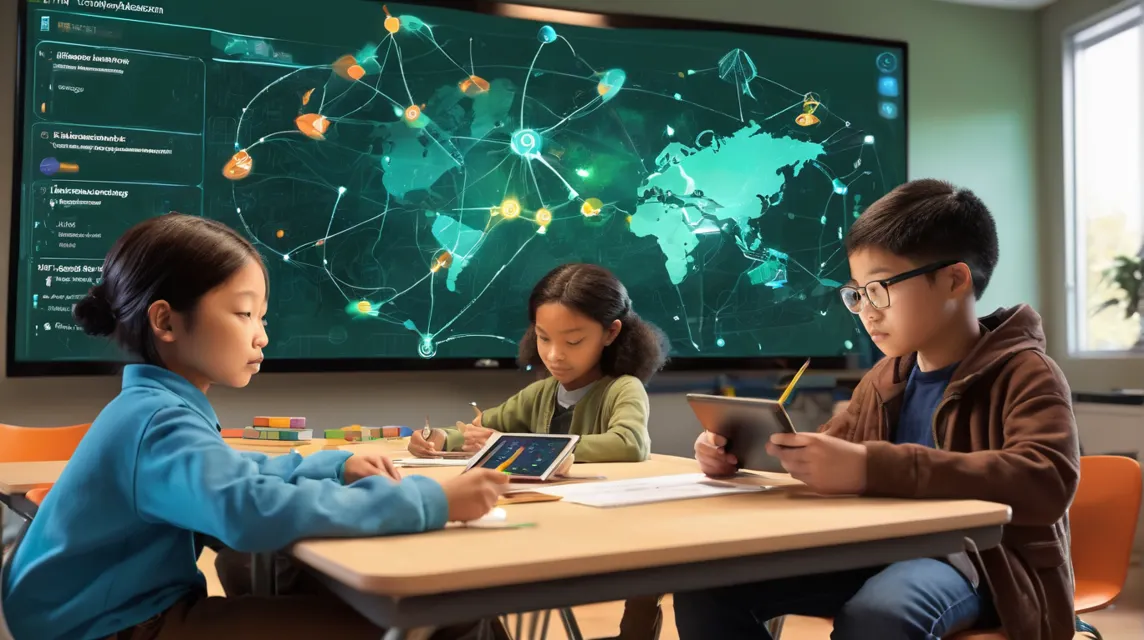The Evolution of Tablets in Modern Education: A Comprehensive Guide
Introduction: Embracing the Digital Shift in Childhood Learning
The landscape of education has undergone a seismic shift in the last decade, thanks to the rise of tablets. Once dismissed as mere gadgets for entertainment, these devices have morphed into essential educational tools that redefine how children learn. Their user-friendly interfaces, portability, and broad spectrum of applications make them ideal for captivating young minds, offering interactive experiences that often surpass traditional teaching methods. As more schools and families embrace technology, tablets are not just accessories; they are transforming how children develop literacy, critical thinking, creativity, and essential STEM skills.
Let’s delve into the transformative role of tablets in education, examining their potential to foster personalized learning and prepare students for an increasingly tech-centric world.
Download my FREE Tablets Guide
The Multifaceted Benefits of Tablets in Learning
Engagement & Interactivity
Picture this: a child immersed in a math adventure game where solving equations helps them unlock new levels. This is the essence of gamification, where apps like Khan Academy Kids and ABCmouse convert mundane learning into captivating experiences. The vibrant animations and interactive quizzes turn subjects into playful explorations, particularly benefiting younger learners who thrive in engaging environments. Storytelling apps like Epic! take it a step further, allowing children to influence narratives, enhancing both comprehension and retention.
Personalized Learning
In education, one size rarely fits all. Tablets excel in adapting to individual learning paces. With apps like Prodigy Math, children experience tailored difficulty levels that respond to their abilities, ensuring appropriate challenges. For example, a child grappling with reading can utilize phonics apps like Starfall for personalized practice, while advanced students tackle more complex tasks. The instant feedback these apps offer helps identify knowledge gaps, prompting timely intervention to keep students on track.
Convenience & Accessibility
Tablets bridge geographical divides in education. With offline capabilities, kids in remote areas can download e-books, videos, and lessons, preserving their learning momentum. Their lightweight designs make them perfect companions—ideal for commuting or outdoor learning. Furthermore, tablets promote inclusivity for children with disabilities through accessibility features like text-to-speech and tactile feedback, ensuring that every child can participate fully in their education.
Fostering Creativity
Creative expression is vital in education. Apps like ScratchJr (for coding), Tynker (game design), and Procreate (digital art) empower children to innovate and experiment. Imagine students coding animations, crafting digital storybooks, or composing music with GarageBand. These activities not only nurture problem-solving skills but also lay a foundation for future careers in technology and creative industries.
Download my FREE Tablets Guide
Key Educational Uses of Tablets
E-books & Audiobooks
Digital libraries such as Amazon Kids+ and Raz-Kids open up a world of literature at a child's fingertips. Features like read-along narration and highlighted words enhance literacy by connecting auditory and visual learning. Audiobooks, especially from platforms like Audible for Kids, can significantly boost listening comprehension and vocabulary, particularly among reluctant readers.
STEM Education
Abstract STEM concepts come alive through tablets. Imagine a classroom where students design and build structures using Minecraft: Education Edition, or explore the universe via NASA Kids’ Club. Augmented reality (AR) applications like Merge Cube allow students to manipulate 3D models of molecules or historical artifacts, making complex ideas tangible and engaging.
Language Learning
Tablets revolutionize language acquisition with interactive apps like Duolingo ABC and Rosetta Stone Kids, which offer engaging lessons and instant pronunciation feedback. For multilingual families, these devices provide exposure to new languages and cultures through immersive videos and content, enriching their learning experience.
Virtual Field Trips & AR Experiences
Platforms like Google Expeditions allow virtual explorations of the Great Wall of China or the depths of the Amazon Rainforest. Augmented reality applications like Civilisations AR integrate historical artifacts into everyday environments, transforming classrooms into interactive museums that deepen cultural awareness and contextual understanding.
Safe Digital Learning: Parental Controls and Strategies
Content Filtering
Safety is paramount when it comes to digital learning. Tablets come equipped with robust parental controls that filter age-appropriate content. Systems like iOS and Android allow parents to restrict access to unsuitable material, while services like Amazon Kids+ curate educational content without ads. Third-party apps, such as Qustodio, provide advanced filtering options to maintain a safe digital environment.
Screen Time Management
As beneficial as technology is, it’s crucial to manage screen time effectively. Tools like Apple Screen Time and Google Family Link help parents set daily limits and schedule device-free periods, cultivating healthy habits. Notifications alert caregivers when limits are exceeded, promoting accountability among children.
Tracking Progress
Apps like ABCmouse and Khan Academy Kids feature parental dashboards that illuminate a child's learning journey. These metrics, showcasing time spent on various subjects and skills mastered, empower parents to support their children better. For instance, spotting a child excelling in science but struggling with writing can prompt targeted assistance.
Download my FREE Tablets Guide
Choosing the Right Tablet for Young Learners
Durability & Protection
When selecting a tablet for kids, durability is key. Options like the Amazon Fire HD 8 Kids come with rugged cases and shockproof designs that can withstand the rigors of youthful exploration. Antimicrobial cases, such as those from Pure Sense, help curb germ spread, while warranties (like Amazon's two-year guarantee) ensure long-term usability.
Battery Life & Storage
Choose tablets with impressive battery life (12+ hours) and ample storage (128GB or more) to support an array of applications, videos, and downloads. Younger children might benefit from simpler interfaces and pre-loaded content to facilitate easy use.
Top Recommendations
- Amazon Fire HD 10 Kids: Affordable, durable, and packed with educational resources.
- iPad (9th Gen): A leader in app compatibility and creative tools like Apple Pencil.
- Samsung Galaxy Tab A9+: Offers a large display and S Pen support, ideal for note-taking and artistic expression.
Striking a Balance: Digital and Offline Learning
Hands-On Activities
Complement tablet lessons with tangible projects. After exploring ecosystems on a device, encourage students to create terrariums or embark on nature walks. Coding lessons can inspire robotics projects using kits like LEGO Mindstorms, bridging the gap between digital and physical learning.
Outdoor Play & Social Development
To counterbalance screen time, foster outdoor activities like sports, gardening, or nature scavenger hunts. Group projects, like building a community garden or staging a school play, cultivate teamwork and communication skills, vital for personal development.
Family Bonding Through Technology
Leverage tablets for family activities: cook together using recipe apps, explore geography with Google Earth, or engage in educational games like Endless Alphabet. These moments turn screen time into opportunities for family connection and interaction.
Download my FREE Tablets Guide
The Future of Tablets in Education
Innovations in AI and AR
The horizon for educational technology shines bright with AI-driven applications like Century Tech that tailor learning experiences based on student data, while AR tools like 3DBear allow children to create virtual environments. These advancements promise to make learning even more engaging and adaptive.
Digital Classrooms & Hybrid Learning
Tablets are key in facilitating hybrid learning environments through cloud-based collaboration tools (like Google Classroom) and live-streamed lessons. Schools are increasingly turning to gamified platforms, such as Quizlet, to engage students and enhance learning, even from afar.
Conclusion: Mindful Integration of Technology
When thoughtfully integrated, tablets become powerful allies in education. By emphasizing pedagogy over mere screen time, employing robust parental controls, and maintaining a balance between digital and hands-on activities, educators and families can harness the potential of tablets to cultivate curious, creative, and tech-savvy learners. The future of education will not just rely on technology but will blend innovation with intentionality, ensuring that technology serves as a bridge—not a barrier—to holistic development.
Final Recommendations for Parents & Educators
- Explore educational resources like Khan Academy Kids and Tinkercad for high-quality, free content.
- Establish clear screen-time guidelines and model healthy tech habits.
- Stay abreast of emerging technologies, such as AI tutors and AR simulations.
What strategies have you found effective in incorporating tablets into your child’s learning? We’d love to hear your stories! 📱✨



